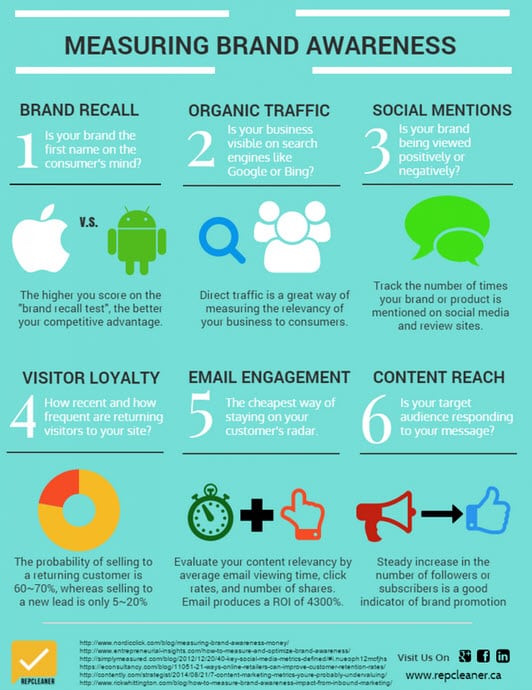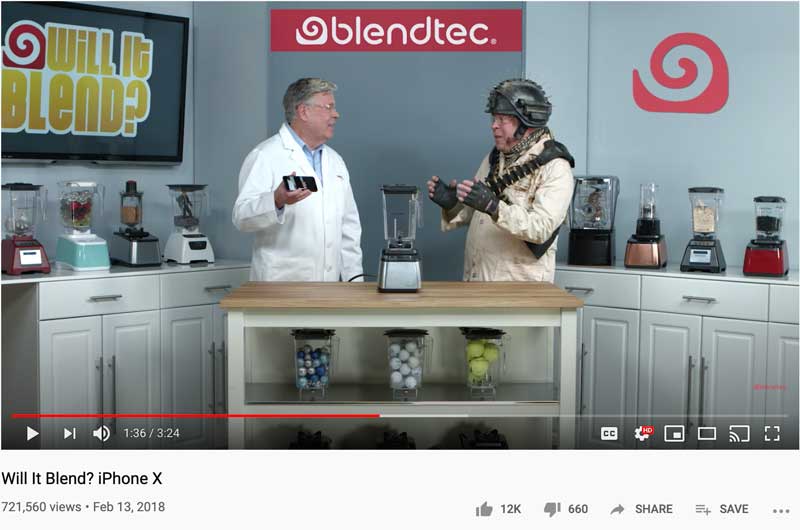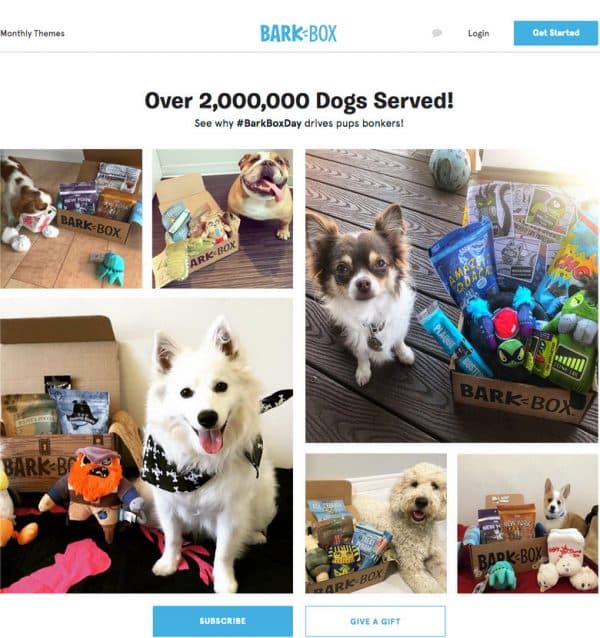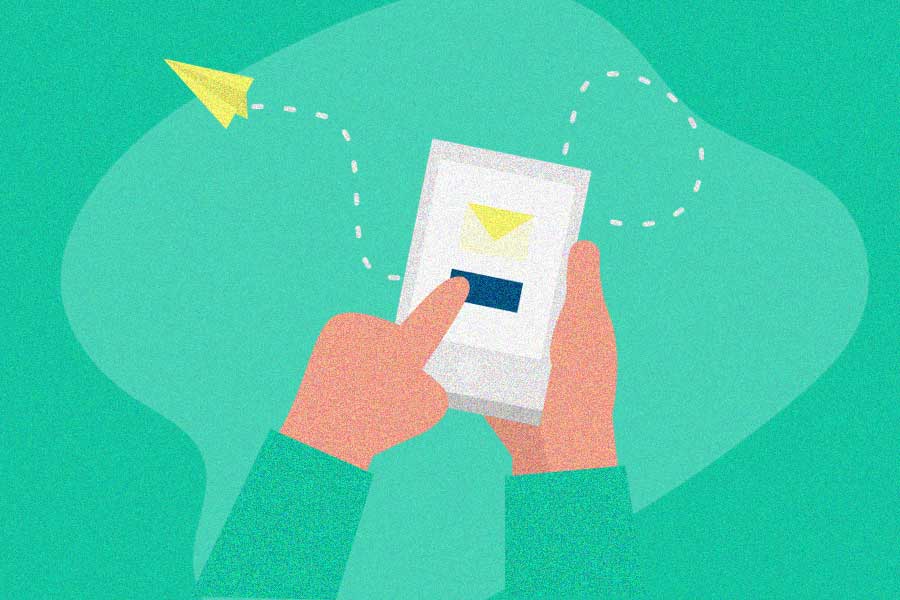We often use brand names when referring to items – Kleenex instead of tissues, Coke instead of soda, and Band-Aids instead of “bandages.” We even use brands as verbs, like “let me Google it.”
These brands have achieved peak levels of brand awareness and recognition. This shows how highly credible they are.
How did they achieve brand awareness success? What strategies can you learn from brands like these, to build your own brand awareness? With this article, we’ll take a look at ways to help you increase your brand awareness.
What is brand awareness? How is brand recognition involved?
Brand awareness is all about pinpointing what makes your product/service unique, and then using that uniqueness to showcase your company’s intrinsic value to a wide audience.
This means going beyond basic brand recognition elements, such as your company logo or imagery. It also encompasses the experience customers have when dealing with your brand from the first point of contact.
Without proper branding, customers are unlikely to recognize what makes your business stand out from competitors, let alone look for you the next time they need a particular product or service.
Using your logo or brand elements on a website, through social media, and anywhere you’re published will make it easy for people to recognize your brand. Offering a consistent brand experience, and reliably delivering on your mission and values, are also crucial to brand awareness.
Brand awareness and brand recognition are sometimes used interchangeably, but brand recognition is just one part of brand awareness.
What makes this type of awareness so important?
Why is brand awareness so important? Here’s a short list:
- Highlights the qualities of your product or services to both existing and potential customers.
- Helps build brand loyalty.
- Increases the recognition of your product or service among consumers.
- Helps increase repeat sales.
- Creates a lasting impression in your customers’ mind.
- Increases market share.
Read more on why brand awareness is important.
Is this type of awareness a vanity metric?
Marketers have debated whether brand awareness is a vanity metric for a while now.
But one school of thought is that brand awareness reminds the target audience of the values that a brand stands for. It is, therefore, key to a company’s success.
One of the strongest drivers in decision making is the ability to remember a product or service. And brand awareness is what fuels the recalling of a product or service.
A good example of an investment in brand awareness is Chevrolet’s sponsorship of Manchester United. The CEO was quoted saying that the sponsorship gives the brand access to a worldwide audience.
On the other hand, some business owners and marketers think brand awareness is too unpredictable and not worth investing in. Others consider brand awareness as a vanity metric that has no effect on ROI.
But we recently surveyed experts helping us understand what attributes to brand awareness.
In the end, we do know what channels contribute the most brand awareness. Superior customer service won out in our own survey.
However, understanding what specific methods generate the best brand awareness, and knowing how to measure the success of a brand awareness campaign, is another topic.
How to increase awareness for your brand
Using different channels to increase brand awareness and their effectiveness is one thing. Knowing exactly what contributes to the growth of your brand is another. Here are a few examples of what you can do to increase your brand awareness.
6 ways to increase awareness with content creation
The content that you generate as a brand is vital for brand awareness. Recognized brands’ content can easily go viral because those brands have higher credibility.
Choosing the right platforms to publish and share content on is also important for brand awareness. A statistic from Hootsuite reports that in 2019, social media users spent around two and a half hours on social media every day. And for people age 16-24, that number’s closer to 3 hours daily. Clearly, social media platforms are a powerful way for your brand to create brand awareness.
Let’s explore ways that brands can use content to enhance brand awareness:
1. Tell a strong background story
You need to share a strong background story of your brand. If your brand was inspired by providing a solution to a waste management problem, for example, you need to share it. Such a story is inspirational, memorable, and not to mention shareable.
You can also showcase a brand behind-the-scenes video of your team or offices. This contributes to your brand’s credibility and adds a human touch.
Another type of story to tell is commonly called a signature story.
A signature story is an authentic and intriguing narrative with a strategic message. This message is meant to enhance or clarify the brand, organization, business strategy and/or customer relationship.
A signature story is an asset that will inspire both the team working in an organization and outside it. It is also a way to enable growth.
A good example of a signature story is this YouTube video where BlendTec actually blends an iPhone. This story is part of a set of stories titled “Will it blend?” The point is to show how strong the blenders are, without actually using the word “strong” in the marketing strategy.
2. Share knowledge
Create content that helps your audience. If you sell healthy snacks, for example, you can share tips on healthy eating. If you are a clothing brand, you can share fashion advice. It is difficult for someone who benefits from your brand’s advice to forget your brand.
3. Provide entertainment
If your industry is a bit more fun, sharing knowledge may not always be necessary. If you sell dog treats, you may want to share fun, entertaining content. A good example here is BarkBox.
As you can see, they played up a big internet trend, “Bird Box”, which everyone was talking about at the time. BarkBox also used some humorous user-generated content that referenced the trending meme.
If you browse through their Instagram feed, you’ll find they actually post quite a bit of user-generated content. This creates new avenues to be seen by a variety of people. The customer content they share typically receives a lot of interaction from their customers and their followers, because it’s highly trusted.
4. Repurpose your content
You may want to do a simple audit of the best performing content on your blog or social media pages and repurpose it. For example, if you had a 2000-word article that did well on social media, consider making an infographic based on the key takeaways.
This will ensure the content’s longevity and allow you to cross-promote it in different ways to maximize exposure, all while helping you reach new audiences.
5. Jump on trends
Just like BarkBox did above, you need to know what’s trending and find a way to weave it into your brand.
For example, on Twitter, you can see the trending hashtags. Choose those that you can relate to your brand. On Facebook, you are able to see what’s popular across the platform. On Instagram, you can search using hashtags and see the popular ones (those with a large number of posts) or those who use the hashtag that are most relevant to your brand.
Then start conversations with those who are seemingly enthusiastic about the topics that are related to your brand. Make sure to keep your consistent brand voice!
6. Run ad campaigns for brand awareness
Platforms like YouTube, Facebook, Instagram and Twitter have options to run brand awareness campaigns. You need to create compelling ad copy and use graphics. On Facebook, you can use videos or slideshows too (which have a lower cost per impression). Most importantly, target your audience accurately in terms of demographics (age and gender), devices used, and interests. Always include a strong CTA like this video explainer campaign here:
You can also test out Google Ads. This is a great way to increase your online presence.
Ensure that your copy is creative. For display ads, your images need to be great, too. Most importantly, target the right keywords, and include negative keywords to avoid wasting your advertising dollars when the unintended audience gets to see your ad.
8 tips for building awareness by reaching out to others
In the world of business, many great things happen as a result of strategic partnerships. Considering that, a lot of great things can happen for your brand after establishing partnerships with other companies. Here are six great strategies to try out.
1. Guest blog
Others’ blogs give you a space to write expert views in your niche, in front of a new audience. News sites are a great place to guest blog. They have high traffic, so you’re likely to achieve awareness for your brand by consistently publishing content, or addressing concerns raised by your clients or readership.
Always have a byline, a short description of your company and company name, or link to your social media pages on the guest posts you create. This will create an opportunity for brand awareness.
You could also create guest blogging opportunities on your site where other experts in your niche can create blog posts and share with their audiences. When they share their posts, that’ll also get your name in front of a new audience. Think about proposing a guest post swap, where you and another company’s writer post expertise on each other’s sites.
Check out what experts have to say about guest blogging best practices.
2. Host a Q&A session
A Q&A session helps show your audience that your company is transparent. You need to come up with a discussion point. It could be a common pain point among your customers. You then need to look for a panel of experts who can effectively handle the discussion. You can take questions from your listeners or viewers and also give them a chance to participate via social media.
Choose a platform where your prospective customers are likely to be. If most of your customers hang out on Facebook, a Facebook live Q&A might be the best option. If they hang out on Twitter, you may want to use a Live Tweeting approach. Go for a hashtag that is descriptive of your Q&A. Polls can also be a way to stir conversations around your brand.
3. Host a podcast or webinar
This strategy is closely related to Q&A. You can host a interview, commentary, or SaaS podcast (or webinar) at a time when your audience is highly likely to tune in. Ask your customers or audience to register for the webinar, so they can participate in the action.
You can also ask for your customers’ email addresses so you can share the replay link, which should expire after some time. This will create a sense of urgency to listen and share.
You can even publish the transcript on your site at some point afterward to create even more content for your brand.
4. Form partnerships
You need to create a partner program with other businesses in your area or that are related to your niche. For example, if you are in the luxury space selling menswear, you can partner with companies selling luxury watches and wine.
This way, you can refer each other to your customers. Sometimes, you may partner with brands that are not related to your niche, but that target the same audience as you. If your target audience in the luxury space tends to travel a lot, you can partner with travel companies, for example, and have the travel company share your magazine with the travelers so that they can read them during their journeys.
5. Venture into a social cause
Find a cause in your community that you can venture into. This will showcase your brand as concerned about the community’s affairs and will allow the people to hold you in high regard. If you sell bottled water, for example, you may sponsor a local charity walk via giving free bottled water for the participants.
6. Membership in associations
Become a member of associations. If you are in the marketing niche, join the marketing associations in your region. It will not only expand your networks but give you an opportunity for brand awareness via a larger umbrella and recognition as a professional brand.
Depending on the niche, belonging to regulatory associations might even showcase your brand as compliant and trustworthy. A new company may advertise in a prominent, exclusive publication for only the members of the association. The company may even attract the attention of investors who could offer to fund the business. In this case, brand awareness will have resulted in a variety of benefits for that company.
7. Work with industry influencers
Influencers have large audiences, especially on social media. You need to choose influencers carefully to ensure that you reach the right audience who could end up becoming customers. Go for influencers who talk about your niche or related niches.
Most importantly, the influencers you choose should have a good reputation that will further boost your brand’s reputation. You need to also look out for follower engagement, and whether their target audience is similar to yours. Learn more about influencer marketing.
8. Display ads on physical locations
This is an oldie, but a goodie. You could display an ad in physical locations like billboards, flyers, or store signage. This can be supported by in-store distribution. So for example, if you are introducing a new lunch product, you can distribute it in a supermarket. This type of paid media still works well for brand awareness.
6 extra ways to get innovative with brand awareness
As you can see there are quite a few ways to help increase your brand awareness. But to stand out from the crowd, you’ll want to take a look at the top innovative ways to maximize your exposure.
These innovative ways act like magic sprinkles to help boost your brand, if done right you can be assured that it will provide long term growth. Let’s look at the top innovative ways to increase brand awareness:
1. Referral programs
A referral program is one of the approaches that you can use to achieve brand awareness. Effective referral marketing mixed with influencer marketing and word of mouth marketing, gives you the potential to reach thousands of people. Thus making this a top growth method.
This is because when you reward your customers, they are more likely to share their experience via word of mouth and social media. Customers trust referrals from family and friends as compared to information relayed by brands. Not to mention the reward that you give your customers and the people they refer primes you to be shared. Therefore it should be useful to make it even more appealing.
For example, travel credit, a discount on your service or product, or a free trial if you are a software company. Here’s an article on how to get more referrals for your business.
2. Packaging
When your product has good packaging, it is easy to stand out from the competition. A cheap-looking package will simply not cut it. It may give a high quality a wrong impression in the eyes of the customer and remember first impressions last. Your packaging should be of high quality.
Something else that you need to be careful about is the colors that you choose for your packaging. Go for deep and bright colors as they do uplift the viewer’s moods.
The colors you go for should also be determined by the product or service that you are selling. Earthy colors are good for organic products or natural products, for example.
Descriptive pictures are also a plus with standing out from the competition. Lastly, be creative. You can add a logo to your packaging or change the shape of your box or bottle.
3. SEO
59% of marketers we surveyed said SEO is the most cost-effective way for building brand awareness. So you’ll definitely want to invest the time and resources to do proper SEO.
There are multiple methods to help increase brand awareness using SEO. You’ll need to track your analytics to understand your traffic, the search terms that people use the most when searching for your site/product/service, your referral traffic sources, and even your audience interest. This will help you make informed decisions on the sites to reach out for link building, or guest posting, the keywords to include in your content.
4. Tell your customers’ story
While there are brands that succeed via telling their brand story themselves, there are those that tell the story of the customers, or better still, give an opportunity for their customers to tell their story. An example here is Airbnb. They have a page where customers tell their story. They share their photos and show how incorporating Airbnb into their lives has made their lives better.
5. Give people a reason to talk about you
Word-of-mouth from your customers is one of the most powerful ways to generate brand awareness. But how can you harness word-of-mouth from your customers? Give them a compelling reason to share!
Our survey found that superior customer service is the most effective way to increase brand awareness. People remember and share brands that go above and beyond to provide a stellar customer experience!
Originality and uniqueness, including brand messaging with a unique personality, were also highly-rated ways to get people talking.
6. Giveaways
Free trials, digital wallet credits, and physical products are a good way to create brand awareness. People are highly likely to share their experience with your brand when they get something for free. They are also likely to become a brand ambassador this way. Branded shirts, for example, can turn someone into a walking billboard.
Wrapping things up
Brand awareness helps create a lasting impression that makes your brand unforgettable among the competition. It also makes your brand easily recognizable, so people do not have to struggle to identify your products or services. It is by no means a vanity metric.
Build your brand awareness by telling a compelling brand story, showing your expertise, and positioning your brand on the right platforms.








